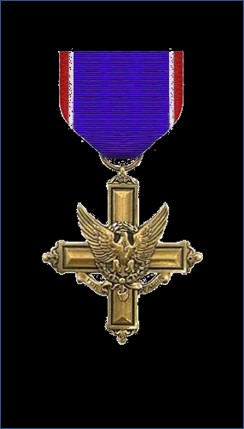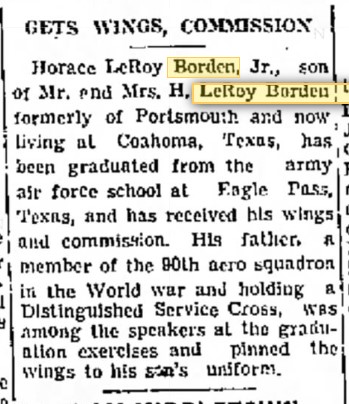
No Picture Available
Born: April 25, 1892
Died: July 23, 1951
H. Leroy Borden
Lieutenant Colonel
Commendations: See details
Served During:
WWI, WWII,
Served In:
- US Air Force

Horace LeRoy Borden was a member of the 90th Aero Squadron in World War I and held a Distinguished Service Cross.
LTC Borden served in the infantry during WWI and later served as Captain with occupation forces in Italy and Germany during WWII. He is buried in the Friends Cemetery in Portsmouth, RI. His headstone has the inscription of Verdun, St Mihiel, Meuse-Argonne Army of Occupation W. W. 2. The Battle of Saint-Mihiel was a major World War I battle fought from 12–15 September 1918, involving the American Expeditionary Force (AEF) and 110,000 French troops under the command of General John J. Pershing of the United States against German positions. The U.S. Army Air Service (which later became the U.S. Air Force) played a significant role in this action.
This battle marked the first use of the terms “D-Day” and “H-Hour” by the Americans. The fighting was depicted in the 1927 film Wings.
The attack at the St. Mihiel salient was part of a plan by Pershing in which he hoped that the Americans would break through the German lines and capture the fortified city of Metz. It was the first and only offensive launched solely by the United States Army in World War I, and the attack caught the Germans in the process of retreating. This meant that their artillery was out of place and the American attack, coming up against disorganized German forces, proved more successful than expected. The St. Mihiel attack established the stature of the U.S. Army in the eyes of the French and British forces, and again demonstrated the critical role of artillery during World War I and the difficulty of supplying such massive armies while they were on the move. The U.S. attack faltered as artillery and food supplies were left behind on the muddy roads. The attack on Metz was not realized, as the Germans refortified their positions and the Americans then turned their efforts to the Meuse-Argonne Offensive. The Meuse-Argonne Offensive was the greatest American battle of the First World War. In six weeks the AEF lost 26,277 killed and 95,786 wounded. It was a very complex operation involving a majority of the AEF ground forces fighting through rough, hilly terrain the German Army had spent four years fortifying. Its objective was the capture of the railroad hub at Sedan which would break the rail net supporting the German Army in France and Flanders and force the enemy’s withdrawal from the occupied territories.
The bulk of the forces engaged in the initial onslaught had to be transferred from the St. Mihiel Salient —- assaulted less than two weeks earlier —- to a new jump off line north and northwest of Verdun. This new section of the front extended thirty miles east to west . The reshifting of forces in such a short period of time was one of the great accomplishments of the Great War. These logistics were planned and directed by Col. George C. Marshall establishing his reputation and preparing him to lead — in the distant future — American forces to victory in the Second World War.

